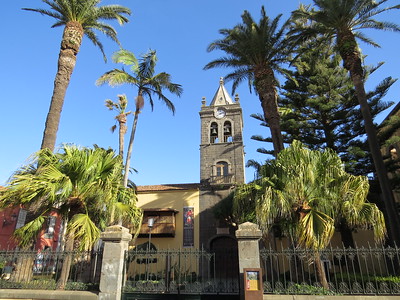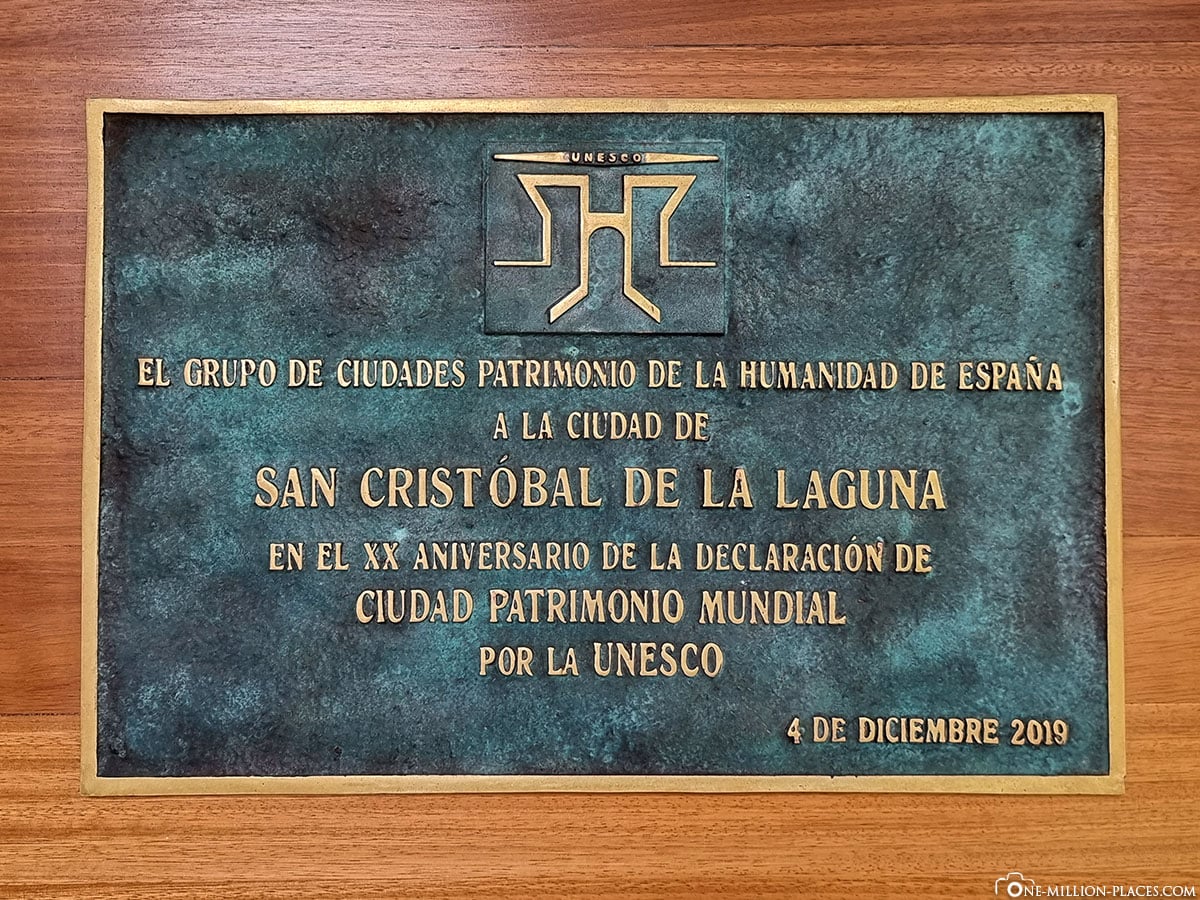San Cristobal de La Laguna

San Cristóbal de La Laguna was the first non-fortified Spanish colonial town, and its grid layout provided the model for many colonial towns in the Americas.
Founded in the late 15th century, it was built "ex novo" and was meant as colonial appropriation of the territory. The city comprises two distinct parts – the Upper Town and the Lower Town. The area contains several churches, the Dominican Convent of Santa Catalina de Siena, and private residences.
Community Perspective: The pleasant small city is worth visiting while on Tenerife, although it isn’t in the same league as its Latin American counterparts. It is dominated by colonial buildings from the 16th to 18th Century, beautiful churches, traditional Canarian houses with open courtyards and wooden balconies, and small squares framed by palm trees.
Map of San Cristobal de La Laguna
Load mapCommunity Reviews
Clyde

I visited this WHS in January 2020. For those visiting by rental car like I did, the easiest way to park your car in a safe place is by heading to the underground Parking La Laguna.
The WHS is relatively small and basically spans from Plaza de la Concepcion to Plaza del Adelantado with a number of churches, chapels, monasteries, convents, an old tower and a lot of 17th and 18th traditional Canarian houses with open courtyards and wooden balconies. This WHS's layout is believed to have been the prototype for most of Latin America's cities and towns. In fact, it really reminded me of Lima which I had visited a couple of months before.
The Cathedral, adorned with tall palm trees and dragon trees, can now be visited for an expensive 5 euros (free audioguide) but not worth the entrance ticket in my opinion. Most traditional houses have been altered a bit too much and taken over by globalisation and consumerism (Starbucks, sushi shops, etc. just to mention a few). Those worth visiting, especially for their tiled courtyards, are Casa Alvarado Bracamonte (which now houses the La Laguna local council), the red stone facade of Casa Riquel and Casa de la Alhondriga for its rebuilt wooden balconies. The church and convent of St. Augustin and the Church and Monastery of Santa Catalina de Siena, with its grill keeping away the nuns from the rest of the world outside, are worth visiting but don't compare with world-class examples for example in Arequipa, Peru, or elsewhere worldwide.
I'm glad I visited San Cristobal de La Laguna (or simply La Laguna as it is known), however in my opinion, although worth visiting when in Tenerife or the Canary Islands in general, it does not possess enough OUV and it does not deserve its place on the WH list.
Matejicek

I did a half day trip to La Laguna during my January 2011 holidays in Tenerife, and I was not disappointed. The historical district was nicely repared, so I could admire colorful facades of townhouses with fine wooden decoration. What I liked the most were wooden balconies and pretty courtyards (photo). The late gothic main church was also interesting both form inside and outside. I think the place is worth-visiting once you are in Tenerife.
Joel on the Road
This was our first World Heritage site on the Canary Islands, and proved to be quite interesting. It was one of Spain's first overseas colonies, and the city's layout was subsequently reused in many other colonies in the Americans including Havana, Cartagena and San Juan de Puerto Rico among others. Although there's plenty of modern buildings scattered around, we spent a nice afternoon wandering around and looking at the various buildings. The cathedral was especially interesting, along with the Church de la Concepcion with its tower. The House of the Captains-General was also quite impressive.
On the whole, this is probably the least impressive of the three sites in Las Canarias, but well worth checking out on your way to Teide and Garajonay!
Read more from Joel on the Road here.
Els Slots

La Laguna (as the city is commonly known) lies right beside Tenerife Norte Airport, and forms a single urban center with the island's capital Santa Cruz. It’s a sizeable city of 150,000 inhabitants, which became a WHS in 1999 mainly because of the model its urban layout provided for many Spanish colonial towns in the Americas. The Lower Town of La Laguna displays the checkerboard street plan that became the norm afterwards.
I stayed in La Laguna for 2 nights at the final stage of my trip around Tenerife and La Gomera, and walked the city’s streets for some serious sightseeing on Saturday morning. Most historic buildings are private residences, usually with an elaborate front door or wooden balcony. The Historical and Anthropological Museum of Tenerife is housed in one of them, the Casa de Larcaro. Entering the museum gives you the rare opportunity to actually look inside one of these buildings – most of the other ones are closed to outsiders. The museum tells the story of the Conquest, the sugar industry and the Larcaro family. La Laguna has some good 20th-century architecture too, such as the Palace of Rodriguez de Azero (now the Casino) and the Leal Theatre.
The most striking parts of La Laguna are its many churches and other religious institutions. Religious orders such as the Dominicans, Jesuits and Augustinians came here to convert the local population, just as they would do in Latin America. The finest church is La Concepcion.
It’s by night that the historic city center really comes alive. The pedestrian streets are filled with cafés and small restaurants, offering mainly tapas and pintxos. No All-day-English breakfasts here: this is a place where the Tenerifeans and other Spaniards go. I had no problem amusing myself here, enjoying for example the Canarian comfort food Ropa Vieja.
All things considered: this is not a WHS visit that will stay with me for long. The street plan wasn’t that obvious to me, and unfortunately, the tower that could provide a good overview was closed. The nomination file records no less than 16 reasons why it should be inscribed, something that even annoyed ICOMOS. Having travelled around La Gomera and Tenerife for a week, I can see that the Canary Islands are considered a stepping stone to the colonization of the Americas. La Laguna might be the best-preserved example of that.
Hubert

San Cristobal de la Laguna was the ancient capital of Tenerife and is still its cultural centre. Today, La Laguna and the modern capital Santa Cruz form a contiguous urban area. Certainly, there are numerous historical towns on the list that are more impressive, nevertheless I enjoyed strolling through the streets of the old town. The historic town centre is laid out like a chessboard. Colonial buildings from the 16th to 18th Century, beautiful churches, and small squares framed by palm trees dominate the scene. Where it is possible, one should have a look at the patios of the manorial houses. Many of them are abundantly planted and typical Canarian wooden balconies can be seen. Worth seeing is the Casa Montanez, the Teatro Leal from the early 20th Century, the Cathedral (photo), and the ex-Convento de San Agustín. Much of the old town was turned into pedestrian zones, so that it is pleasant to stroll through the narrow streets.
You reach San Cristobal de La Laguna easily via the well developed motorway. The city is worth visiting if you are in Tenerife, and it is a nice contrast to the busy tourist centres in the south of the island.
Florencio Moreno-Anega
This is a small city near the town of Tenerife. It was declared World Heritage Site in 1999 as its historic buildings remain quite well kept after 500 years.
Anyway it is not my favourite site in Spain. I respect the reasons that led the Committee to declare it but in my opinion there are several other places in my country that would have deserved the nomination previously to this one.
I would not go till the island of Tenerife only to visit this town but the island itself has a lot of attractives, including another World Heritage Site, Teide National Park. Therefore if you decide to go there perhaps you will enjoy a walk on the streets of this old city.
Community Rating
- : Inigo Cia Disnsam
- : Forest80
- : Tarquinio_Superbo Fabi-ddorf Vernon Prieto JLuth Caminographer
- : Christoph Voyager George Gdanski Cezar Grozavu WalGra Shoaibmnagi
- : Joel on the Road Gary Arndt Luis Filipe Gaspar Jonas Hagung Walter Martina Rúčková Craig Harder Jeanne OGrady Joyce van Soest Luboang Ih0000 Rodinia MH Martinacurra88 Els Slots
- : Randi Thomsen Alexander Lehmann Dorejd Peter Lööv Shandos Cleaver Matejicek Alex Marcean Viaje al Patrimonio Thomas Buechler
- : Szucs Tamas Stanislaw Warwas Travel Addicts Peter Alleblas Csaba Nováczky Hubert ChrisN Argo Roel Sterken Alikander99 Adolfo Ivan Rucek Philipp Peterer Svein Elias
- : Solivagant Clyde Wojciech Fedoruk HaraldOest
- : Zoë Sheng Philipp Leu
Site Info
- Full Name
- San Cristóbal de La Laguna
- Unesco ID
- 929
- Country
- Spain
- Inscribed
- 1999
- Type
- Cultural
- Criteria
-
2 4
- Categories
- Human activity - Urban planning Urban landscape - Colonial
- Link
- By ID
Site History
1999 Inscribed
Site Links
Locations
The site has 1 locations
La Laguna is connected to Santa Cruz, the capital of Tenerife, by a tramway. A ride takes 35 minutes.
Connections
The site has 20 connections
Art and Architecture
Constructions
Damaged
Geography
History
Individual People
Religion and Belief
Science and Technology
Timeline
Trivia
WHS on Other Lists
Visitors
193 Community Members have visited.
The Plaque
 (external source)
(external source)